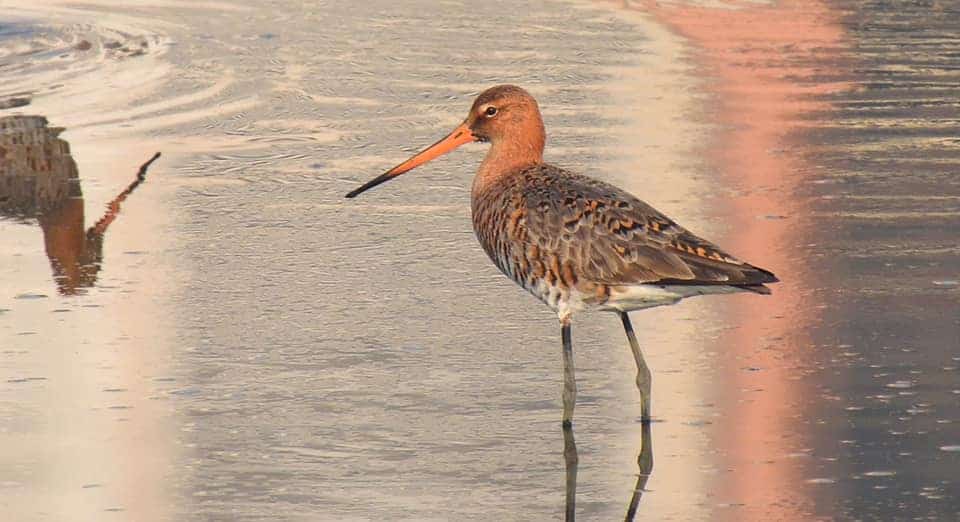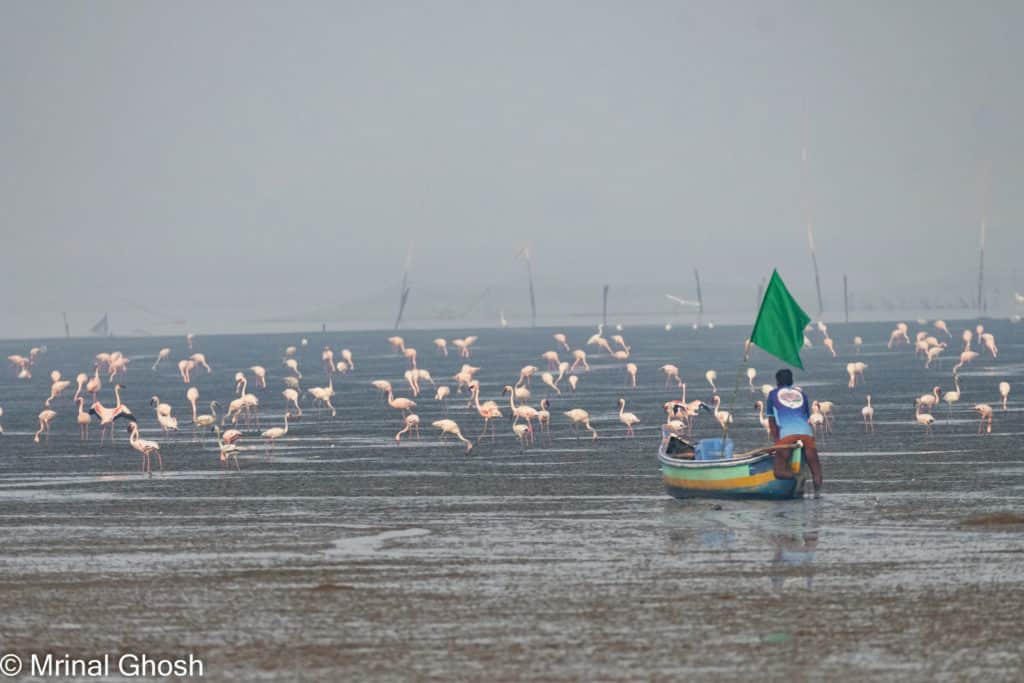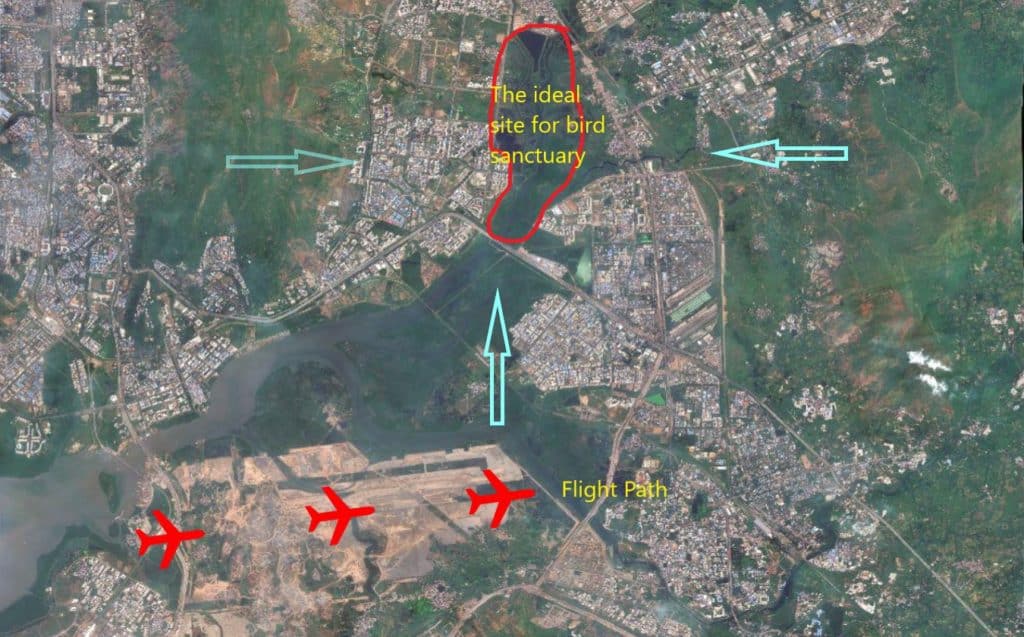Any Kharghar resident who takes the local train to work, would have easily noticed what is going on across the creek as they leave or reach the railway station.
Rivers, mangroves, wetlands, hills that mother nature has bestowed us are being ravaged — all for one purpose: building the Navi Mumbai International Airport.
It is definitely a good thing to have an airport nearby as it will bring down airport commute times from hours to just a few minutes. It will also lead to general economic development for Navi Mumbai and surrounding suburbs.
The scale at which works are being taken up, and the speed with which the Government is getting all the necessary licences, indicates that there is no turning back. However, closing our eyes to all the warnings related to the natural ecosystem impact of this project, would be foolhardy.
Years ago, eminent environmentalists such as the late Daryl D’Monte wrote about the possibility of calamities like flooding of the airport and to this day, activists continue to try to sensitise the authorities.
Ecological impact of clearing out nature
Bombay Natural History Society (BNHS) which was one of the key agencies given the task to study the airport’s ecological impact has done extensive research. The airport is coming up literally on top of the creeks, river-mouths, mangroves and wetlands that line the coastal parts of Navi Mumbai. BNHS in its quarterly reports, observed that the area was a major habitat and congregation point for large numbers of resident and migratory birds. This also reflects another important fact — the whole area of Navi Mumbai and its surroundings lies on a path called the Central Asian Flyway which is one of the main migratory routes taken by some of the most exotic bird species remaining on this planet. One can easily conclude that such breakneck infrastructure development, as is already being carried out, will disturb the birds usually seen here, push them to move away to new sites, and overall, put them under risk.
Altering local and global natural phenomenon such as this can be disastrous, as witnessed with the death of about 17,000 birds in a Rajasthan lake in October-November 2019. But the most worrying and important of all warnings put out by BNHS and environmentalists is that of potential bird hits that could occur with hundreds and thousands of planes soon to take off from and land at this new airport.
This leads to the highly critical need for the conservation and restoration of alternate sites of refuge for all the fauna, birds included, that have been and will be displaced by the airport. Careful management of both development and the natural ecosystem is the balance that humankind needs to strive for, if we have to sustain our race.
Read more: How citizen action saved Lotus Lake in Navi Mumbai
Alternate sites of refuge
No place is better than Kharghar when it comes to creating an alternative site for the flora and fauna displaced by all the infrastructure works going on in and around the new airport.
Kharghar is really the jewel in the crown of Navi Mumbai, and it lies just across the creek from the the airport site at a decent distance of over 10 km from the north-eastern periphery of the airport. It is already a location that boasts of multiple geographical features including low hillocks full of beautiful waterfalls, dozens of wetlands, grasslands, rivers and streams – all suitable to act as a sanctuary to draw the fauna that is displaced from nearby.


Sectors like 1, 8, 10, 16, 17, 25, 28 and areas towards the creek on the Roadpali side are already full of wetlands and mangroves protected by the National Wetland Rules and the Coastal Regulation Zone (CRZ) Rules of Maharashtra State and the country. With abundant greenery – trees, mangroves, swamps and grasslands, and tidal water, these areas are already rich with of fauna, especially birds — both local and migratory. Also, there is a fishing community that has practiced traditional fishing in the water bodies here and coexisted with nature for decades. These wetlands also act as an anti-pollutant and carbon sequestrant, critical for this node as just beyond these wetlands lie the Taloja industrial zones which are known to cause significant pollution in the area.

Proposed Bird Sanctuary in Kharghar
Kharghar wetlands, situated between Kharghar and Roadpali through which Taloja river drains out into the creek, is the ideal place to designate as a bird sanctuary, a mitigating step to avoid bird hits to flights landing in and leaving the upcoming Navi Mumbai International Airport.
Look at the graphics below. It is neither along the planned flight path of the airport, nor is it far off from the current airport site. Also, as it is an easy distance from the airport site that the birds frequent, this spot will be suitable for local and migratory birds to use as an alternative to the airport. Importantly, this is a documented site by BNHS – a highly biodiverse wetland where several migratory birds already come.

The significance of Kharghar in context of the flood control and carbon mitigation targets of the Mumbai Metropolitan Region (MMR) has been recorded by a panel of scientists, planners and architects in their Draft MMR development plan submitted to MMR Development Authority for the period 2016–2036.

In this development plan, Kharghar features in all the key environment action points suggested by the report. This includes:
- River Corridors to create a buffer around river systems; to develop biodiversity and act as flood prevention measures (Kharghar Nullah is mentioned)
- Regional Parks around areas of high biodiversity or cultural significance (Pandavkada waterfall area in Kharghar foothills has been called out)
- Green Connectors in forest areas that are currently not forested for afforestation initiatives, so that they can act as corridors for free movement of fauna (the Kharghar foothills is marked).
It is unfortunate that the State Government has been dragging its feet when it comes to following the proposals of this very well documented and extremely thoughtful draft plan.
Citizens’ demands
While the Kharghar node will continue to see huge infrastructure, commercial and residential development, it is imperative that we maintain a balance between nature and human activities so that climate change impacts can be mitigated and citizens and fauna have a refuge from all the chaos of life. Ordinary citizens pray that the Government of Maharashtra helps to preserve the current wetlands and hills of Kharghar and protect them from vested interests who think and act only for their own short-term gains.
It is our demand to the Government is that they urgently :
- Notify all existing wetlands of Kharghar (both natural and man-made) as “Wetlands”
- Notify the contiguous/semi-contiguous wetland system of Sector 16, 17, 25 and 28 as a bird sanctuary on the same line as Thane Creek Flamingo Sanctuary
- Barricade the CRZ areas of Kharghar to prevent encroachment and other activities that are not allowed by the relevant rules
- Hand over the mangroves areas of Kharghar under CIDCO to the Forest Department
- Recognize the Kharghar Nullah and Taloja riparian system as rivers that critically need cleaning up – start cleaning and conservation initiatives through agencies like Jalshakti Abhiyaan (like Namami Ganga) so that these rivers can be saved from the water pollution caused by Taloja Industries
- Establish the “Green Connector” of the Kharghar Foothills running on the Kharghar node side along side Belapur RBI quarters all the way through to the Old Mumbai Pune highway beyond Sector 35, so that there is a contiguous free zone for movement of fauna from and to the Parsik Hill range and beyond.
Follow the efforts of Kharghar citizens on Facebook at Save the Kharghar Wetlands and Hills.
[A version of this article first appeared on the Kharghar Wetlands blog here, and has been suitably edited before republishing.]
Also read
Airport has more benefits than drawbacks